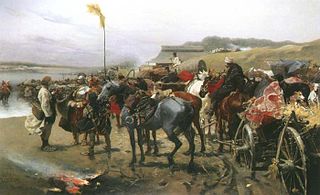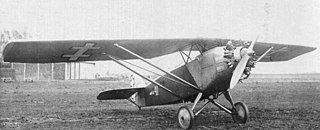 W
WThe Battle of Olkieniki took place on November 18, 1700, during the Lithuanian Civil War, between forces of the Sapieha family, led by Michał Franciszek Sapieha, and an anti-Sapieha coalition of Wiśniowiecki, Ogiński, Radziwiłł and Pac families and their supporters, led by Michał Serwacy Wiśniowiecki.
 W
WThe occupation of Lithuania by Nazi Germany lasted from the German invasion of the Soviet Union on June 22, 1941 to the end of the Battle of Memel on January 28, 1945. At first the Germans were welcomed as liberators from the repressive Soviet regime which occupied Lithuania prior to the German arrival. In hopes of re-establishing independence or regaining some autonomy, Lithuanians organized their Provisional Government. Soon the Lithuanian attitudes towards the Germans changed into passive resistance.
 W
WKaro Aviacijos Tiekimo Skyrius was the Army Aviation Workshops of Lithuania, established at Kaunas. The facility was considerably modernized under the leadership of Antanas Gustaitis, who also designed a variety of aircraft to be built there in small series in the 1920s and 1930s under the designation ANBO.
 W
WThe military of the Polish–Lithuanian Commonwealth consisted of two administratively separate armies of the Kingdom of Poland and the Grand Duchy of Lithuania following the 1569 Union of Lublin, which joined to form the bi-conderate elective monarchy of the Polish–Lithuanian Commonwealth. The Polish army was commanded by the Hetmans of the Polish–Lithuanian Commonwealth, commanding the armies of their respective country. The most unique formation of both armies was the heavy cavalry in the form of the Polish-Lithuanian winged hussars. The Polish–Lithuanian Commonwealth Navy never played a major role in the military structure, and ceased to exist in the mid-17th century.
 W
WThe Soviet occupation of the Baltic states covers the period from the Soviet–Baltic mutual assistance pacts in 1939, to their invasion and annexation in 1940, to the mass deportations of 1941.
 W
WThe Soviet Union occupied most of the territory of the Baltic states in its 1944 Baltic Offensive during World War II. The Red Army regained control over the three Baltic capitals and encircled retreating Wehrmacht and Latvian forces in the Courland Pocket where they held out until the final German surrender at the end of the war. The German forces were deported and the leaders of Latvian collaborating forces were executed as traitors. After the war, the Baltic territories were reorganized into constituent republics of the USSR until they declared independence in 1990 amid the collapse of the Soviet Union.
 W
WThe Battle of Saladen was a battle that took place on 19 March 1703 near Saločiai, Lithuania during the Great Northern War. The Swedes won the battle.
 W
WThe Siege of Kaunas was laid by the Teutonic Order on the newly built Kaunas Castle in spring 1362. It was the first brick castle built by the Grand Duchy of Lithuania. After a month-long siege, the castle was captured and destroyed. Its commander Vaidotas, son of Kęstutis, and 36 others were taken captive. The defeat, followed by the destruction of Veliuona and Pieštvė the following year, severely weakened Lithuanian defenses along the Neman River and opened central Lithuania to Teutonic attacks.
 W
WThe Sventiany Offensive was a military operation mostly undertaken by the Imperial German Army's 10th Army against the Imperial Russian Army's 10th Army om the Eastern Front during World War I.
 W
WThe Vilna offensive was a campaign of the Polish–Soviet War of 1919–1921. The Polish army launched an offensive on April 16, 1919, to take Vilnius from the Red Army. After three days of street fighting from April 19–21, the city was captured by Polish forces, causing the Red Army to retreat. During the offensive, the Poles also succeeded in securing the nearby cities of Lida, Pinsk, Navahrudak, and Baranovichi.